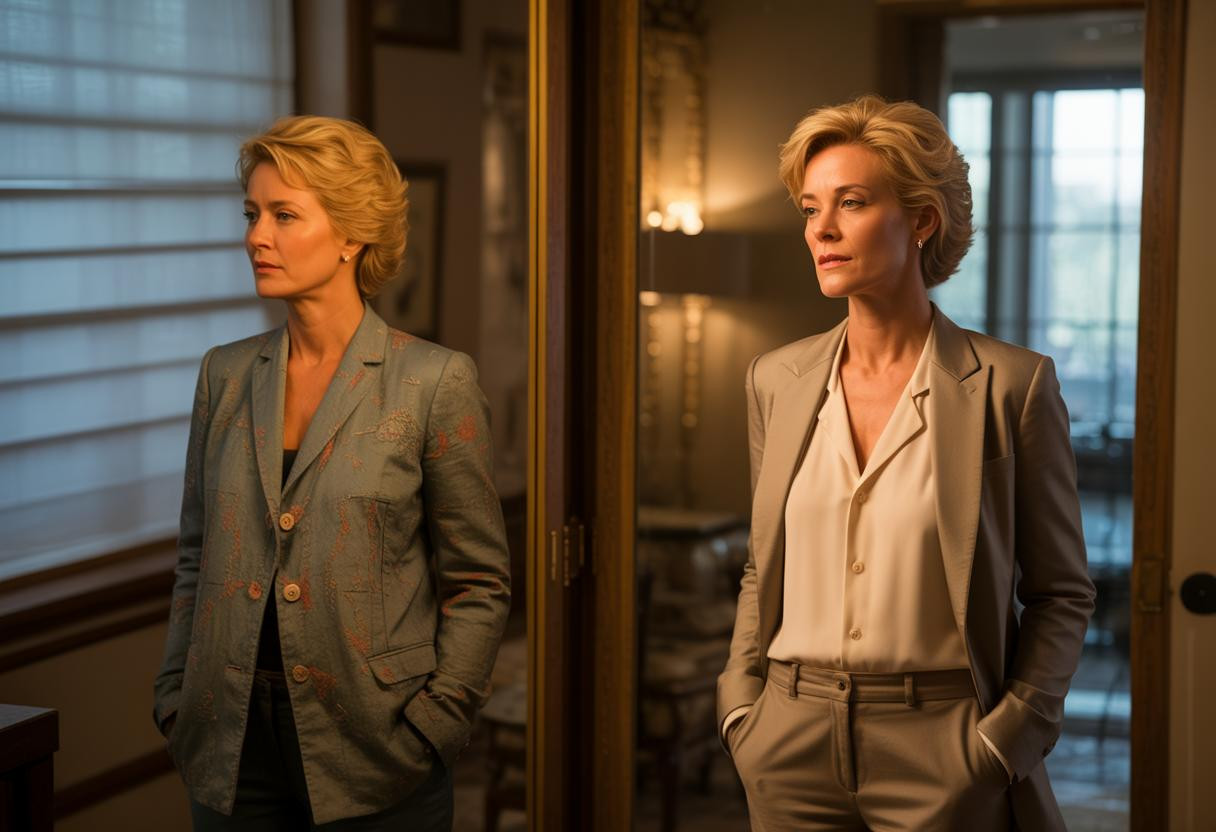The moment I turned 47, I noticed something shifting in my closet. The blazers that once made me feel powerful suddenly felt too stiff, while my favorite jeans seemed to highlight areas I’d rather minimize. This awakening led me to discover that transitional dressing after 45 isn’t about following rigid rules—it’s about understanding how our bodies, lifestyles, and confidence evolve together.
Why your 40s and 60s require completely different style strategies
Women in their 40s are often juggling peak career demands with family responsibilities, requiring versatile pieces that transition from boardroom to dinner seamlessly. Think structured blazers paired with wide-leg trousers that maintain professionalism while accommodating a changing silhouette.
By contrast, women in their 60s typically prioritize comfort and self-expression over workplace requirements. They gravitate toward midi dresses in breathable fabrics like linen, layered with cropped jackets for temperature control during travel or leisure activities.
The body changes that reshape your wardrobe priorities
During your 40s, metabolism shifts often require more structured support around the midsection. Structured denim becomes essential for creating a polished silhouette while maintaining comfort throughout long days.
In your 60s, joint comfort takes precedence. Elastic waistbands disguised within tailored designs and stretch fabrics become non-negotiable. The goal shifts from hiding changes to celebrating your body’s comfort needs.
Career versus lifestyle: how your daily demands shape your style
Your 40s often demand a capsule wardrobe that works overtime. A silk blouse might pair with tailored pants for client meetings, then transition to dark jeans for school pickup—efficiency becomes paramount.
- Blazers with stretch for all-day comfort
- Ponte pants that look like trousers but feel like leggings
- Wrap dresses that flatter while allowing movement
- Quality cardigans for instant polish
Your 60s lifestyle might emphasize leisure travel, grandchildren, or creative pursuits. Packable fabrics and easy-care materials become priorities over strict professional requirements.
The psychology behind dressing for your decade
I’ve noticed that women in their 40s often dress to project competence and energy—they’re still proving themselves in many areas of life. Bold accessories and statement pieces help maintain visibility in competitive environments.
Women in their 60s frequently embrace what I call “mood dressing”—choosing outfits based on how they want to feel rather than external expectations. This might mean sequined jackets for dinner out or graphic tees paired with elegant pants for casual confidence.
Common styling mistakes that age you unnecessarily
In your 40s, the biggest mistake is chasing every trend without curation. Stretch velvet pieces work because they’re both current and flattering, but not every trending silhouette serves your body.
Women in their 60s often fall into the “frumpy trap”—choosing oversized, shapeless clothing in the name of comfort. The secret is finding pieces that offer ease without sacrificing style, like A-line tunics with interesting necklines.
Investment pieces that work across decades
- Cashmere cardigans in neutral tones
- Well-fitted blazers with subtle stretch
- Quality leather accessories that elevate any outfit
- Classic trench coats in timeless cuts
How to shop smarter for your changing body
Think of your wardrobe like a good friendship—it should support you through changes without judgment. Comfortable flats that elongate your legs exemplify this philosophy perfectly.
Focus on quality over quantity, especially as you transition between decades. One perfectly fitted ponte blazer serves you better than three trendy jackets that don’t flatter your current silhouette.
Remember, the most elegant women I know aren’t following someone else’s rules—they’re writing their own. Your style evolution should feel like coming home to yourself, not conforming to external expectations about what women “should” wear at any age.
